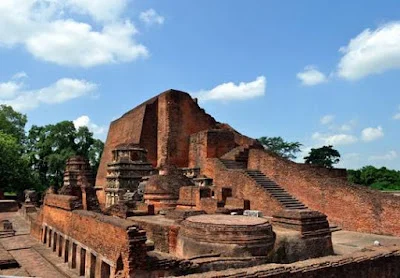The Taj Mahal is one of the most famous monuments in the world, attracting millions of visitors every year. This stunning mausoleum, located in Agra, India, is a symbol of love and is widely considered to be one of the greatest examples of Mughal architecture. Its grandeur and beauty have captivated people for centuries, but what is the history behind this magnificent monument?
The Mughal Empire
The Mughal Empire was one of the most powerful empires in India, ruling over a vast territory from the early 16th century to the mid-19th century. This period was marked by great cultural and architectural achievements, and the Mughals left behind a legacy of incredible buildings, including the Taj Mahal.
The Origins of the Taj Mahal
The Taj Mahal was commissioned by the Mughal Emperor Shah Jahan in memory of his beloved wife, Mumtaz Mahal. She had died in 1631 while giving birth to their 14th child, and Shah Jahan was heartbroken. He decided to build a monument to honor her memory and to express his love for her. Construction of the Taj Mahal began in 1632 and was completed in 1653.
Design and Architecture
The design of the Taj Mahal was the work of a team of architects and artisans, led by the Persian architect Ustad Ahmad Lahauri. The building is made of white marble and is adorned with precious stones and intricate carvings. The main dome, which is 73 meters high, is flanked by four smaller domes and is surrounded by four minarets, each 41 meters tall.
The Taj Mahal is set in a beautiful garden, which is divided into four parts by walkways and water channels. The garden is designed to represent the Islamic idea of paradise, with trees and flowers in perfect symmetry.
Symbolism and Meaning
The Taj Mahal is not just a beautiful building, it is also rich in symbolism and meaning. The white marble symbolizes purity and the love between Shah Jahan and Mumtaz Mahal. The intricate carvings and inlays represent the fusion of Indian, Persian, and Islamic styles, reflecting the diversity of the Mughal Empire. The garden, with its symmetry and abundance, represents the idea of paradise in Islamic culture.
Legacy and Influence
The Taj Mahal has had a profound influence on architecture and design around the world. Its style has been copied in many buildings, including the Taj Mahal Palace Hotel in Mumbai and the Dolmabahçe Palace in Istanbul. The building has also inspired countless artists, writers, and poets, who have been captivated by its beauty and symbolism.
Conservation and Preservation
The Taj Mahal is a UNESCO World Heritage site and is considered to be one of the most important cultural monuments in the world. Over the years, the building has suffered damage from pollution, weathering, and overcrowding. In response, the Indian government has implemented a number of measures to conserve and preserve the building, including limiting visitor numbers and introducing pollution controls.
Conclusion
The Taj Mahal is a testament to the power of love and the achievements of the Mughal Empire. Its stunning design and symbolism have captivated people for centuries, and it remains one of the most important cultural monuments in the world. As we continue to appreciate its beauty and significance, we must also work to conserve and preserve this incredible building for future generations to enjoy.
![]()





